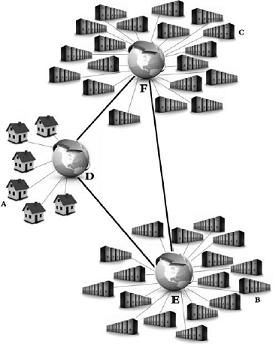A few more people have weighed in on my new paper. I tend to think that if I’m angering both sides of a given debate, I must be doing something right, so I’m going to take the fact that fervent neutrality opponent Richard Bennett hated the study as a good sign.
Others have been more positive. Mike Masnick has an extremely generous write-up over at Techdirt. And at Ars Technica, my friend Julian has the most extensive critique so far.
I thought most of it was spot on, but this seemed worth commenting on:
Lee thinks that the history of services like America Online shows that “walled garden” approaches tend to fail because consumers demand the full range of content available on the “unfettered Internet.” But most service providers already offer “tiered” service, in that subscribers can choose from a variety of packages that provide different download speeds at different prices. Many of these include temporary speed “boosts” for large downloads.
If many subscribers are demonstrably willing to accept slower pipes than the network can provide, companies providing streaming services that require faster connections may well find it worth their while to subsidize a more targeted “boost” for those users in order to make their offerings more attractive. In print and TV, we see a range of models for divvying up the cost of getting content to the audience—from paid infomercials to ad-supported programming to premium channels—and it’s never quite clear why the same shouldn’t pertain to online.
The key point here is the relative transaction costs of managing a proprietary network versus an open one. As we’ve learned from the repeated failure of micropayments, financial transactions are surprisingly expensive. The infrastructure required to negotiate, meter, and bill for connectivity, content, or other services means that overly-complicated billing schemes tend to collapse under their own weight. Likewise, proprietary content and services have managerial overhead that open networks don’t. You have to pay a lot of middle managers, salesmen, engineers, lawyers, and the like to do the sorts of things that happen automatically on an open network.
Now, in the older media Julian mentions, this overhead was simply unavoidable. Newspaper distribution cost a significant amount of money, and so newspapers had no choice but to charge their customers, pay their writers, sign complex deals with their advertisers, etc. Similarly, television stations had extremely scarce bandwidth, and so it made sense to expend resources to make sure that only the best content went on the air.
The Internet is the first medium where content can go from a producer to many consumers with no human beings intermediating the process. And because there are no human beings in between, the process is radically more efficient. When I visit the New York Times website, I’m not paying the Times for the content and they’re not paying my ISP for connectivity. That means that the Times‘s web operation can be much smaller than its subscription and distribution departments.
In a world where these transaction costs didn’t exist, you’d probably see the emergence of the kinds of complex financial transactions Julian envisions here. But given the existence of these transaction costs, the vast majority of Internet content creators will settle for free, best-effort connectivity rather than going to the trouble of negotiating separate agreements with dozens of different ISPs. Which means that if ISPs only offer high-speed connectivity to providers who pay to be a part of their “walled garden,” the service will wind up being vastly inferior (and as a consequence much less lucrative) than it would be if they offered full-speed access to the whole Internet.

 Tim Lee’s long anticipated Cato Institute Policy Analysis has been released today.
Tim Lee’s long anticipated Cato Institute Policy Analysis has been released today.  The Technology Liberation Front is the tech policy blog dedicated to keeping politicians' hands off the 'net and everything else related to technology.
The Technology Liberation Front is the tech policy blog dedicated to keeping politicians' hands off the 'net and everything else related to technology.